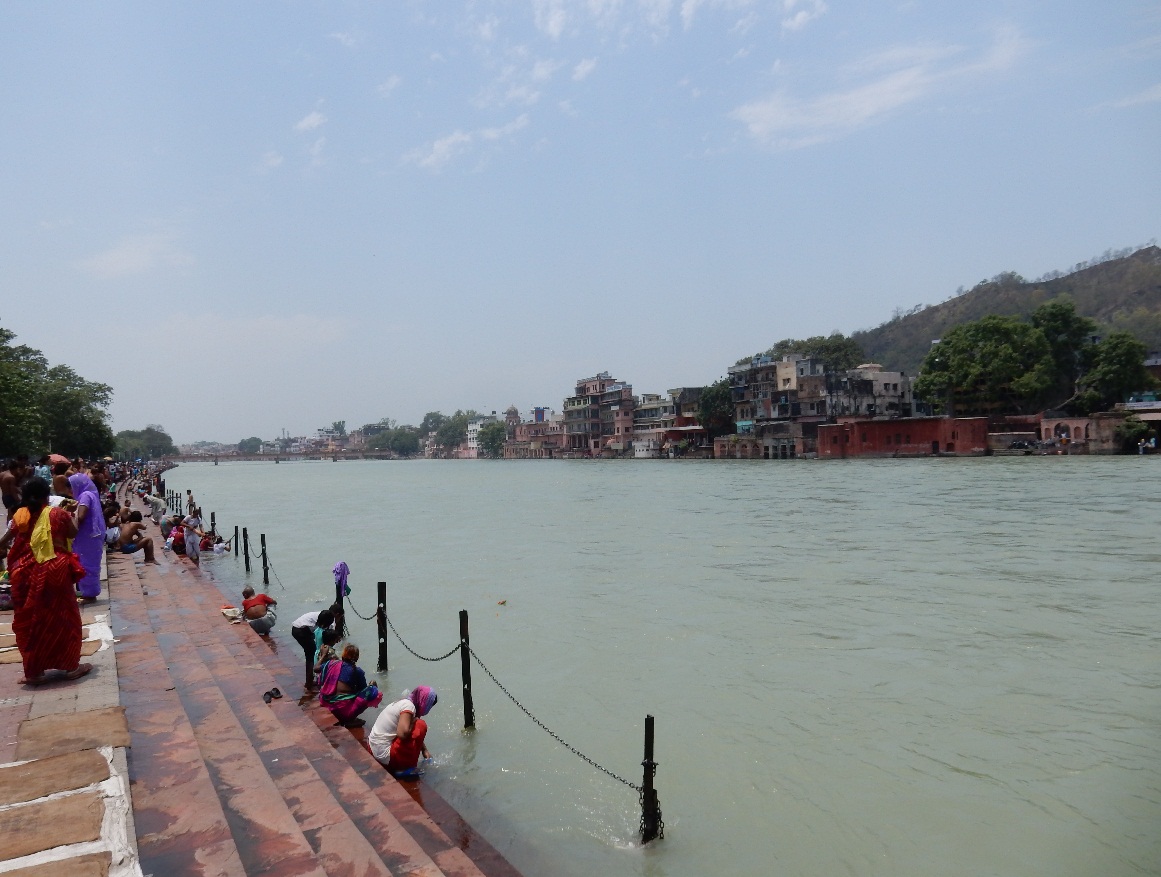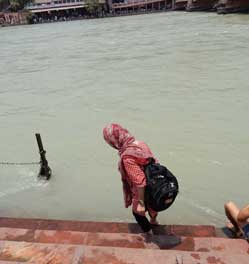By Harriet Larrington-Spencer, ICIMOD
Gender, intersectionality with socio-economic stratifiers and climate vulnerability
Before commencing fieldwork in the Upper Ganga River basin, in Uttarakhand, I had started a literature review looking to assess the gendered drivers of vulnerability to climate change. I started this review by reading critiques of Women, Environment and Development (WED), an approach observable within the climate sphere that posits the inherent vulnerability of women to environmental change. Critiques counter these assertions, highlighting that women are not intrinsically vulnerable to the impacts of climate change and although this ‘story line’ enables an access point for science and development, such an approach deflects attention from the structural conditions that reproduce the power imbalances and inequalities that exacerbate vulnerability (see Resureccion, 2013; Arora-Jonsson, 2011).
To mitigate this, research on climate change should be gendered so that it reflects complex and intersecting power relations and recognises that gender is not simplistic binaries of men and women. Women and men can be “…rich or poor, urban or rural, from different ethnicities, nationalities, households and families all which produce specific results” (Arora-Jonsson, 2011; p.479). This richness needs to be understood when looking at gendered vulnerability and its drivers.
Fieldwork in the Upper Ganga River basin
Whilst undertaking fieldwork in the HI-AWARE sites listed in Table 1, I kept this concept of richness in mind, wanting to understand how gender intersects with other factors to produce vulnerabilities to the changing climate.
Table 1: HI-AWARE field sites in the Upper Ganga River Basin visited during recent fieldwork
|
Site |
Village |
|
Low Altitude |
Mohammudpur Bazurrgghat |
|
Kangri Khadri Khadakmaf |
|
|
Mid Altitude |
Pyukhari |
|
High Altitude |
Kalimath |
All the villages visited are close to the popular yatra (pilgrimage) route from Hardiwar, accessible on foot through steep mountain roads to Devprayag, Kalimath and Kedarnath. According to Hindus, Haridwar is considered one of the holiest places in India, being one of four sites were the elixir of immortality was spilled by Garuda, mount of Lord Vishnu. Pilgrims and tourists alike flock to the bathing ghats to cleanse their sins (photos 1 & 2). Devprayag is considered sacred due to the confluence of two ‘heavenly’ rivers – the Alaknanda and the Bhagirathi – and Kalimath is the only place where the Goddess Kali can be worshipped.

 Photos 1 & 2: Pilgrims and tourists preparing to bathe in the Haridwar Ghats.
Photos 1 & 2: Pilgrims and tourists preparing to bathe in the Haridwar Ghats.
Male outmigration
Conversations during field visits indicated a clear trend – particularly in the higher-altitude villages, where agriculture is more challenging – of the outmigration of men to work in the tourism industry. Women tended to stay in the villages, looking after the remaining members of the household and undertaking agricultural activities.
For this blog, I take the village of Kalimath (photo 3) as a case study. The information in the case study was provided by Girish Bhatt, a PhD student at HNBGU in Srinagar, who is currently researching the differences between policy and practice in terms of the impacts of natural disasters on women.
Within the village, there has been a diversification of livelihood practices – largely by (young) men – into tourism. The type and location of tourism is stratified by caste. The village social strata consist predominantly of Brahmins, Kshatriya and the Scheduled Castes.
For the Brahmin population, tourism activities are based within Kalimath and involve running cafes, small shops, guest houses and homestays. Their dominance is likely due to greater affluence, traditional dominance and the ownership of land on which to establish these industries. Conversely Kshatriya men are more involved in tourism in Kedarnath, developing and maintaining paths and providing horse and donkey rides for pilgrims to reach the town. This is a remunerative industry, as the final 14 kilometres to Kedarnath cannot be made by vehicles. The Scheduled Caste men from Kalimath are employed by the Kshatriya people in Kedarnath.
 Photo 3: View of Kalimath village over the Saraswati River.
Photo 3: View of Kalimath village over the Saraswati River.
The 2013 flash floods
Between June 1 and the June 19 of 2013, cumulative rainfall in Uttarakhand exceeded 385 milimetres, a 440 percent increase compared to the average monsoon. This cloud burst, combined with a glacial moraine dam outburst, led to flash flooding along the tributaries of the Upper Ganga. Dubbed the ‘Himalayan Tsunami’, the death toll exceeded 5,000. In Kalimath and the surrounding villages, over 100 young labourers died.
Considering the different roles undertaken by men and women within the Ganga basin and men of different castes within tourism, differential vulnerabilities existed as a result of the flash flooding. In Kedarnath, there was little warning of the flooding and due to the width of the valley (photo 4) and it was difficult for both tourists and workers to escape the surging waters. As Kalimath is further downstream, there was more warning regarding the flooding. Furthermore, Kalimath Village and the surrounding agricultural lands are located above the river (photo 3), meaning there were safe areas for residents and tourists to escape the torrents of water.
As a result, most village women, of all social classes, in Kalimath remained relatively safe, as did the Brahmin males who were running the tourist industry in the village. Conversely, in Kedarnath, there was a much higher death toll of those working in the tourist industry – comprising particularly men from the Kshatriya and Scheduled Castes.
In addition to the death toll, there have been long-term reverberations for the Kshatriya and Scheduled Caste widows whose husbands lost their lives in the flash flooding. Although the widows are currently supported by NGOs they must also survive, either now or in the future, on agricultural land, some of which has been damaged by flooding and landslides.
The future
Despite the 2013 floods, yatra along the Ganga remains popular, with visitor numbers rising again since 2013. As tourism continues, young men from agricultural villages in the river basin will continue to migrate to work in the industry. Considering that climate projections indicate the increased likelihood of flash flood events in the Ganga River basin, these men remain vulnerable to the immediate dangers of flooding, whereas women who remain in Kalimath face the secondary vulnerability of increased agricultural work load and declining agricultural yields as a result of loss and damage of agricultural land by flooding and landslides.
References
Arora-Jonsson, S., 2011. Virtue and Vulnerability: Discourses on women, gender and climate change. Global Environmental Change, 21, 2: pp. 744-751.
Resurreccion, B., 2013. Persistent women and environment linkages in climate change and sustainable development agendas. Women’s Studies International Forum, 40: 33-43.
